June 1994 Newsletter

Stories From the Past
Lansing Historical Society
Copyright © Lansing Historical Society - All rights reserved
Hedden's -- Long ago but not forgotten
By Dee Barber
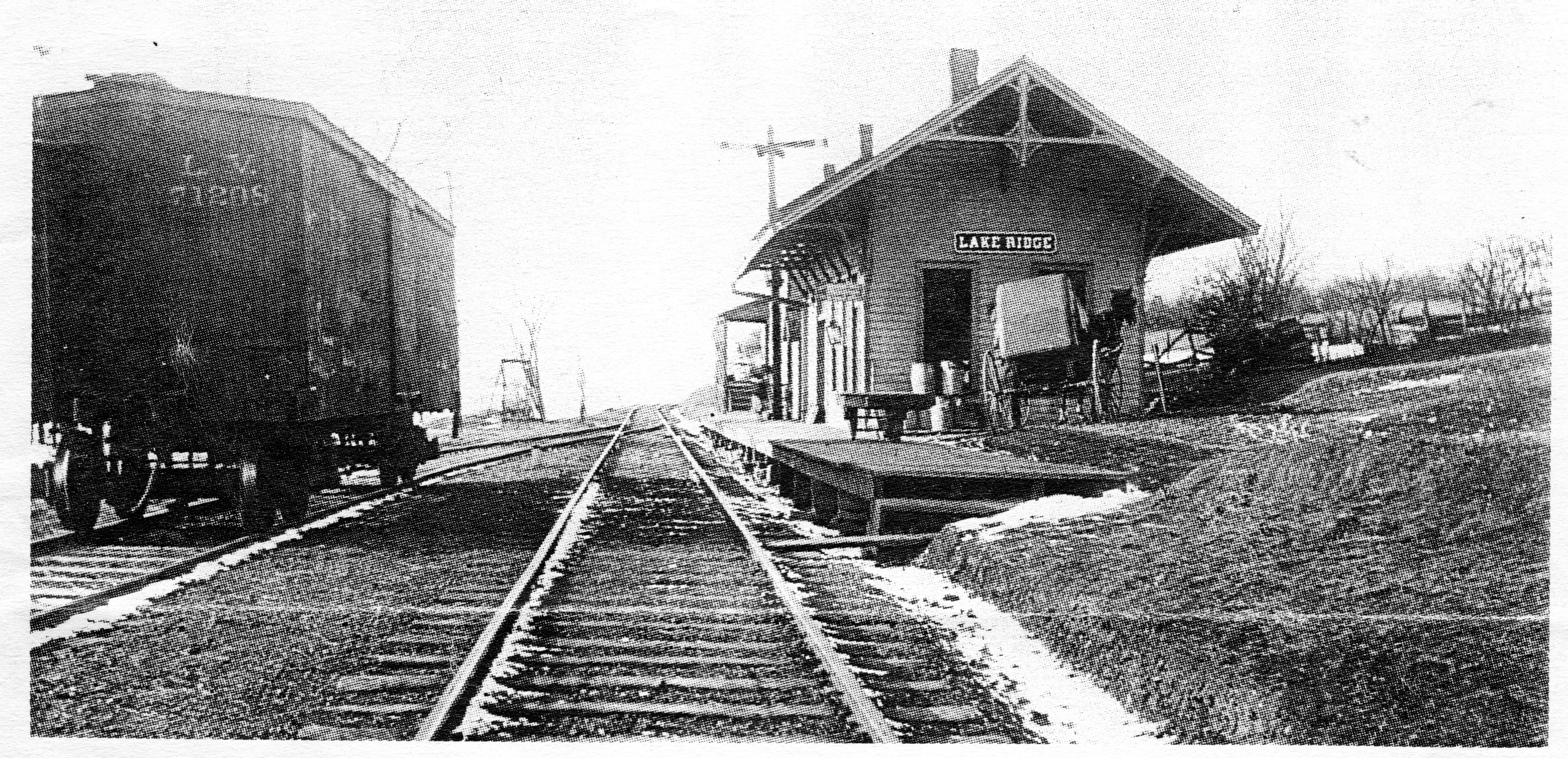
With all the changes taking place at NYSEG’s Millikcn Station, it seemed appropriate to do an article on this generating plant which has played an important role in Lansing’s history for more than forty years. With change, we often have concerns for losing a part of history. However, I soon found that change can offer a different opportunity — not one of losing, but finding history. As new roads were built, the old foundations were uncovered. As the new chimney went up, memories of Milliken’s early construction were recalled. Soon I began a search for earlier history on this area, and I made a wonderful discovery — Hedden’s! This discovery came with the help of two of Lansing’s children, Frances Brown and Veda Bush Holden.
The point on Cayuga Lake, just south of Milliken Station, was originally known as Himrod’s Point after a settler who came in 1792. Recently we discovered that Jonathan Woodworth’s home was just north of Himrod’s, and that Jonathan hosted the first meeting of the Township of Milton in 1794. Later in 1802, Aaron Hedden settled on the point and it became known as Hedden’s.
It is not known exactly what year the Fenner family came to Lansing, but Frederick Fenner was one of the first merchants in Lake Ridge. We also know that a George and Catharine Fenner were early settlers — their youngest son Casper having been born at Lake Ridge in 1825. But we are not sure which Fenner first owned the farmland where the new Milliken road cuts through. This farm was located on a road that connected Lake Ridge Road (later named Milliken Station Road) and Stark Road. Family stories include a report that, at an early time, this farm had one of the largest open fields in this area. Today all that is left of the farm are the stone foundations of a house, a barn which includes huge corner stones, a smoke house, and another 7-foot high stone building. Newell and Sissy Fenner visited this site years ago and were able to collect the hand-forged hinges and handles from the decaying wood.
Veda Bush was born on the high ground at Lake Ridge in 1900. Veda’s grandparents Lucius & Elizabeth Hakes moved there in 1895 and took over the Lake Ridge Hotelon Lot #42. The hotel and store were owned by the Shanks, Lucy having inherited it from her father L. D. Ives who purchased it in 1870. Frederick Fenner was an early proprietor of this inn which was built in 1814. The building stood where Lake Ridge Road and the State Highway split, and it was eventually lost to fire.
Veda and Frances were connected through strong friendships between their families. Frances Brown was born along the lake at Heddon’s in 1902 and thinks her mother, Kit Townley Brown, may have also been born there. She was one of three sisters -- Emily, Ethel, and Frances — and the history books tell us that her father John W. Brown was a native of Lansing, son of Reuben Brown. Frances remembers him referring to his birth place as “Brown Town” because so many Browns lived there. This is no doubt the area we know as the Brown District near the airport.
Louise Bement, Veda Holden, and I met with Frances in her Groton home in April. We took one of our calendars along and Frances pointed out her father next to the Lehigh Valley Railroad station. (October 1994). John Brown is the man in the picture that is stooped. He was very, very ill as a child and back in 1864 they knew nothing of these conditions. It hurt him so to move or to go to bed at night, so they had him sit in an old Boston rocker. When he was old enough to stand up they found that his joints had fused, leaving him bent over. He went through his entire life unable to move his hips, stricken with what they called “hip disease”.
John’s mother died in 1864 and his father died of Tuberculosis a few years later. Frances tells how he was only 3 or 4 years old and no one wanted to bother with him. It is said that one relative couldn’t take that little boy because he swore. Finally Aunt Emily Brown Hedden, a sister to his father, took him in. They lived in the Hedden home on Wilson road (possibly the old Shulman farm). He obtained his education in the common schools and a private school in Ithaca, and at twenty-one years of age he learned telegraphy in Ludlowville. He was appointed postmaster at Hedden’s in June, 1888.
John Brown first married a lovely girl, Ida Townley who died when Ethel was two weeks old. Later he married Ida’s sister. He was station master from 1892 to 1920. Later, he purchased the store at Lansingville and died in that hamlet in 1923.
Frances tells us, “It was Hedden’s not Lake Ridge and we had a post office there until the RFD came (RFD#9). It changed from Hedden’s NY to Lake Ridge NY because it was very confusing to have the station Lake Ridge but the mail Hedden’s. Daddy didn’t think it was much for a child of 10 or 11 to sort the mail. I would empty the bag and sort the letters and I knew every box by name or number. One day there was a gentlemen who came in and watched me, but I didn’t pay any attention. I found out later that he was a postal inspector.”
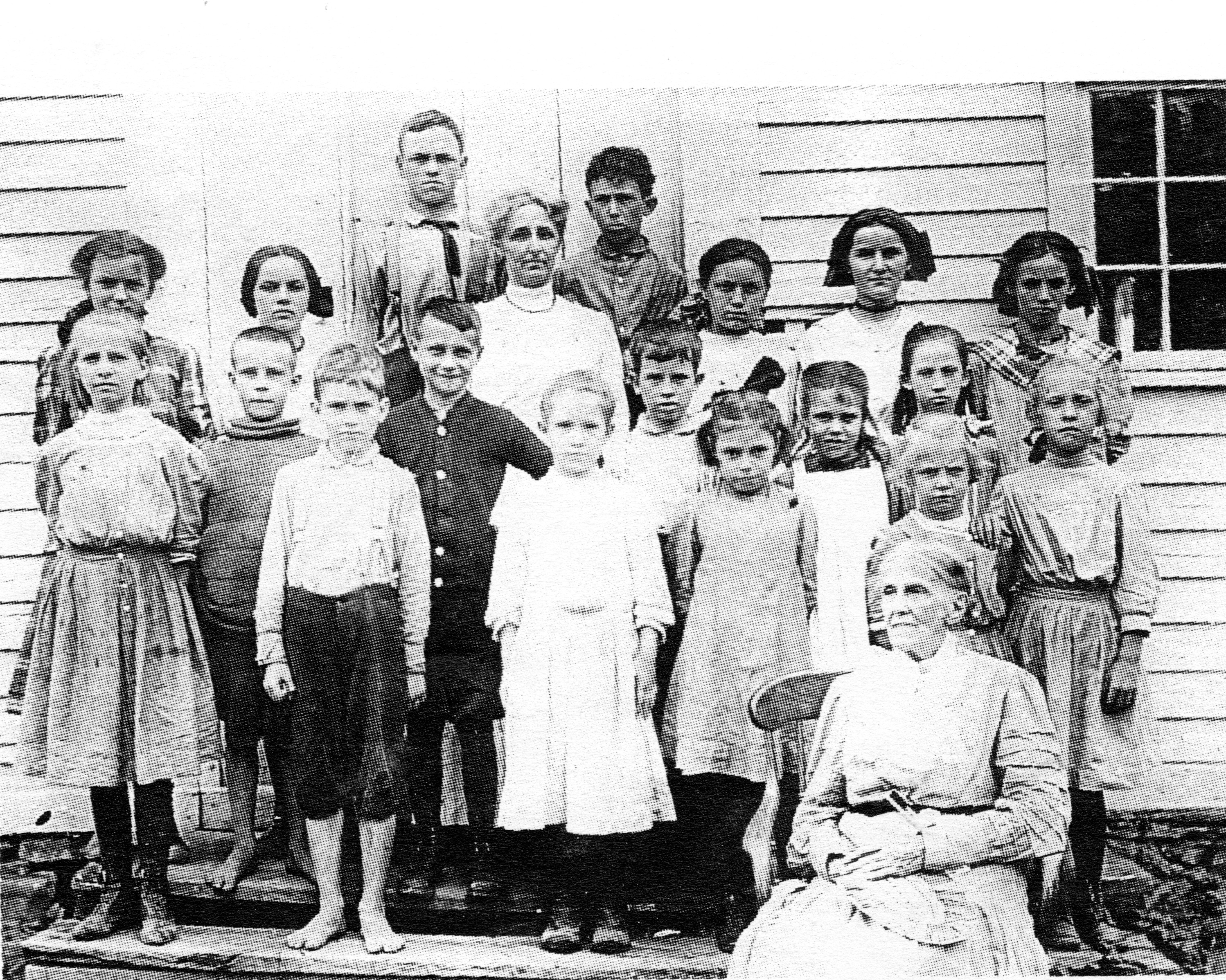
Frances warned us that her memory isn’t as good as it used to be, but memories were abound as together we looked at a school picture. Her sister was in the school picture and she told us the boy in the back row on the right is the man her sister married. She said, “if he’d looked like that she wouldn’t have married him — he grew up to look better I guess.”
She also pointed out Ethel Beckhorn Blackman who lives in Sayre but has kept in touch with her. In fact, there was a wonderful pot of flowers in the room that Ethel had sent. Ethel’s father was killed on the railroad, leaving his wife with six young children to raise. She returns to Lansing each year to visit his grave.
Frances recalled that Naomi Stout was one of her best friends. She also told a story of how her and another friend made the excuse of being concerned about Veda’s sister Lula being frightened by a roaming pig, and having to leave the school to protect her. They left the school and climbed over the cemetery fence, which was forbidden, and climbed on a tombstone. She couldn’t recall how this story ended.
Ethel Brown (born 1896) was four years older than Veda, but Veda and her were always friends and Veda loved to visit their home along the tracks at Hedden’s. They would have overnights and Veda remembers sleeping five across in the bed with the dog — she can’t remember getting much sleep. Veda tells us, “You could stand on their porch at Lake Ridge Station and shake hands with the man on the train.”
Veda was only two years older than Frances, but Frances always felt as if she were just too young to be of any interest. Veda remembers that both sisters, Ethel and Emily, were teachers and along with Veda they were frequently together - boyfriends and all - but they left Frances behind as she was too young. There was never a dull party with Ethel around as she wasn’t afraid of a thing and loved life. Ethel eventually married Ivan Davis (son of Wm & Cora Davis) but they were only together for a year before she died from Tuberculosis. Frances loves to write verses and she shared a lovely one with us about her sister Ethel. Veda remembers that when the family was in Lansingville, and Ethel was teaching, she went to Ithaca and bought a big yellow hat. She didn’t think her mother would like it so she kept it under her bed, and you know how you can’t keep a secret from a mother for very long. Veda went on to say, “I always remember Ethel, who was a beautiful girl anyway, with this big yellow hat with a bow on it.”
Veda recalled how she was the oldest in the family, so she was use to being the boss. Frances was the baby in her family and always looked up to the others. Veda told us, “The girls had their boyfriends, and Bill Powers who married Emily took us to Watkins Glen one day and they were all in the car with the top down... As we traveled along we would holler to everybody and wave our hands and we were having a wonderful time. Emily the oldest said, ‘you’re not suppose to do that’ — she was the boss then.”
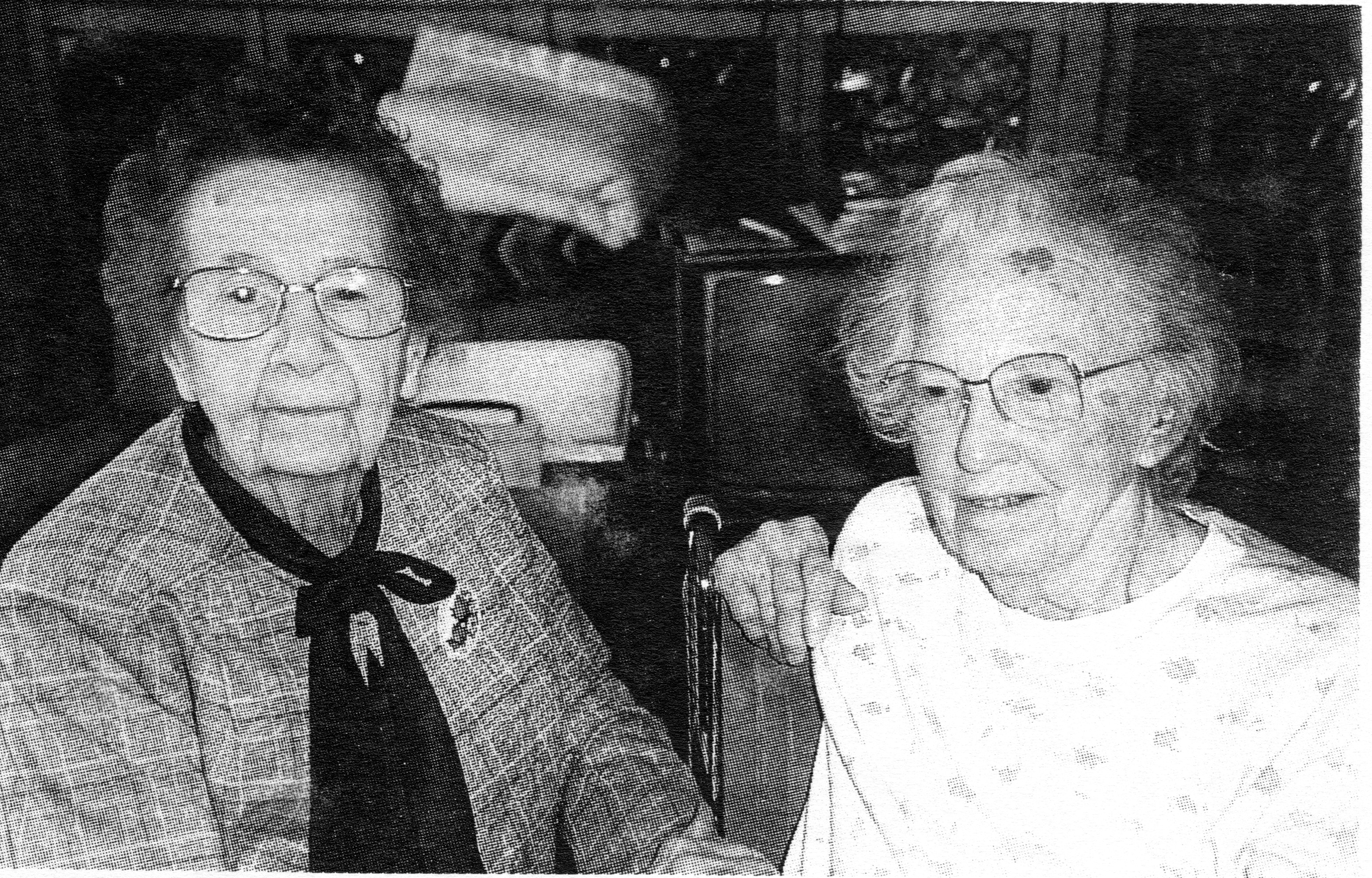
Frances’ sister Emily was born in 1894. As a little girl Emily would always say, “I am going to be a teacher”. After Emily had graduated from training class her father who was Collector and Jacob Bowers had a plan for Jake to get elected as trustee and then to hire Emily as teacher. Their plan worked out - Jake got elected and hired Emily, but their mistake was that you had to be 18 to teach in NY schools. Hattie K. Buck made them get a certificate from Albany for Emily to teach the six weeks or so before she turned 18. Emily taught at Lake Ridge for five years, got $11.00 per week, and boarded at home.
Emily was a wonderful teacher and, as Frances passed her exams, Emily advanced her. She started at King Ferry high school at 12 years of age. However, it was never considered that socially she was not ready to go into a high school class and she felt very childish next to the other girls. Laura Woolley was ahead of Frances in school. She drove a horse so Frances would walk up the hill to Lake Ridge, get in the buggy with her, and get a ride to King Ferry. Later when her family moved to Lansingville, she went to Ludlowville Union School. Frances and Veda both have a belief that if children are not socially ready, they should not be advanced.
Veda was always going to be a teacher and didn’t think there was anything else to do - she didn’t want to be a nurse. In school she would take a grade of little children aside and help them. Frances tells us that all three sisters have taught in all three counties. She recalls that Ethel taught in the Herring (Beebe) District at one lime. Frances taught in Etna a couple years, taught in the Brown district, Sage District and then after nine years of teaching went to Cortland Normal for a couple years and got a better job. Then she taught primary at Ludlowville.
The process was first you went to training class and then you could teach in a district school. Apparently, the city kids deserved something better. They could teach First to Eighth grades in a one-room school, but if they wanted to teach in the city they had to go to Normal School. It was a three year school but if you went to training class you got a year’s credit. Frances thinks she got paid $10 to teach, maybe $11. Veda got $25 and so did Ethel but the World War changed that. There was a law that you couldn’t get over a certain amount. Frances remembers one teacher getting over $14.00 a week and everyone was astounded.
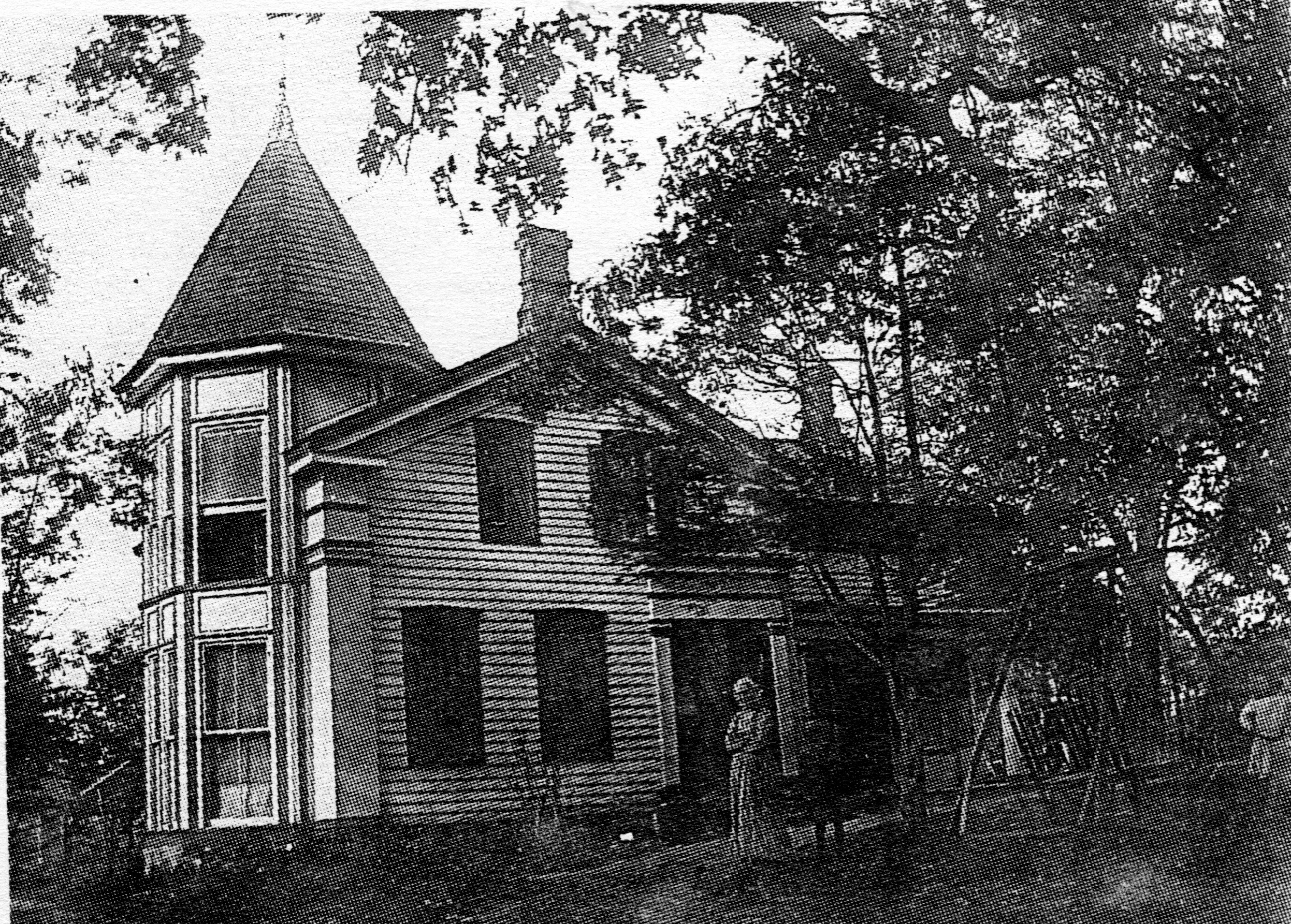
She remembers teaching with Ellen Mahaney in Ludlowville and they never had any friction - they depended on each other. Veda remembers substituting for both of them after she was married and tells us that Ellen and Frances later taught at King Ferry. She recalls things like the children being sick because they had eaten too many fish after a good catch the night before; or, they would find things in their carton of milk. It would spoil Veda’s lunch with the things they’d say! Betty MacKenzie later told Dee how she remembers starting as a teacher in King Ferry and how helpful and kind Frances was.
Louise recalled how Eleanor Brown Munson had told her that she went to school in Etna and Frances was her teacher. At the time she didn’t really understand too much about them being cousins because Frances was a distant cousin and quite a bit older than she. Eleanor’s brother went to school there and she was allowed to tag along and she got her hands nearly frozen. Eleanor said she would never forget how kind Frances was to her that day. She also remembers that when Frances was in teacher’s training in Ithaca, she sent Eleanor a little note to come and visit her.
A favorite thing was to slide down the hill to Hedden’s. There were no cars to speak of, but they had to make sure there were no trains coming. Frances learned to row at an early age and enjoyed the lake a great deal. Rowing and sleighing were done in a skirt which was normal attire for little girls.
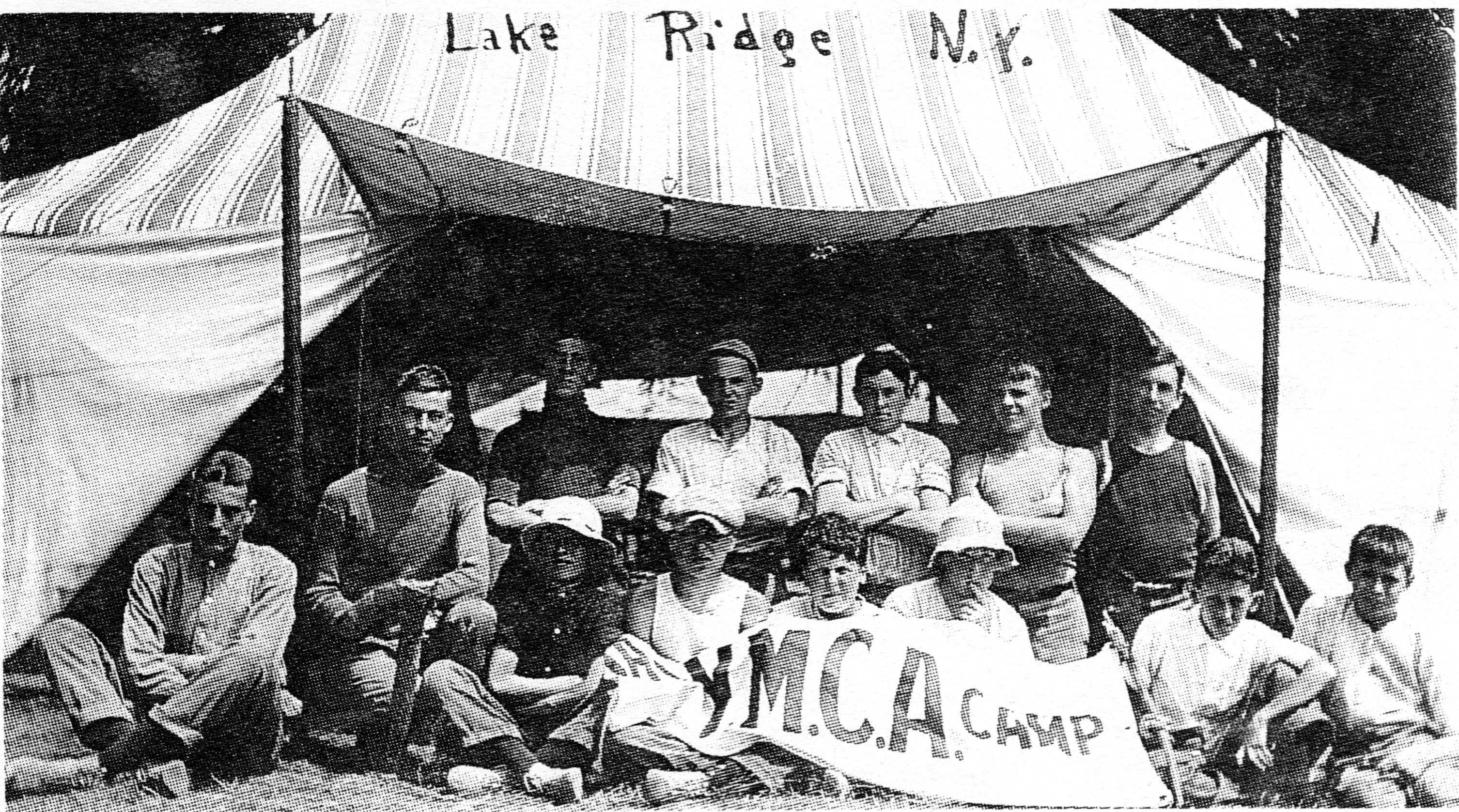
Frances would walk the hill to the Lake Ridge school unless someone came along to give her a ride on a hay wagon or whatever. Everyone knew Frances because they knew her Dad. She knew everyone, so she knew it was all right to take a ride.
Hodden’s offered many opportunities for small girls to discover the world around them. Frances thinks many times of the places they went that, today, you would not let a child near. Veda remembered going with Clara Quigley and her parents (the Campbells) to see Clara’s grandmother who lived in Trumansburg. She remembers taking a wagon and horses on the boat and across the lake to stay for the night. She wasn’t sure why she did it - being afraid of the water all her life - or why her mother ever let her go.
Frances loved to run down the hill from the Butt’s house to the station. Thev had grandchild that would come to visit and Frances would play with them. She also remembers that they had a dog that would stand around waiting to see if there was anyth’n left in her dinner pail.
Later the Butt’s house was the Clayton Crim house and at one time John Clinton lived there. It was west of the drive which is beyond Milliken’s old entrance and the Medicine Tree. This may have been the house that Fran Cahalan described as the field office during early construction at Milliken. Cap Fenner tells me that, when it was torn down, one of the construction employees used the lumber to build his house. Fran is familiar with the area, as one of his first jobs was to take the backhoe and fill in all the wells from abandoned homes on NYSEG property. He has another connection with Hedden’s, as Catherine Bright Cahalan’s mother was a Keim and her family arrived in Lansing at the Lake Ridge statibn in 1920 — lucky for Fran! And what about that Medicine Tree? Fran only remembers that it couldn’t be taken down when Milliken went up.
Veda and Frances agreed that you could count the houses that were around on one hand. The Lanes (Maybelle and Joel) lived near the top of the hill and there was a road opposite their house and it went over to the Stark’s Road. Anna and Jake lived there when their children were little. There were empty houses along the road and some kids were afraid to go by them. One is where Jane Buchannan lived. Frances says she was afraid of everything else but she was never afraid to go by the houses. Veda remembers that on arbor day they would go down where the new Milliken road is now and pick Trailing Arbutus.
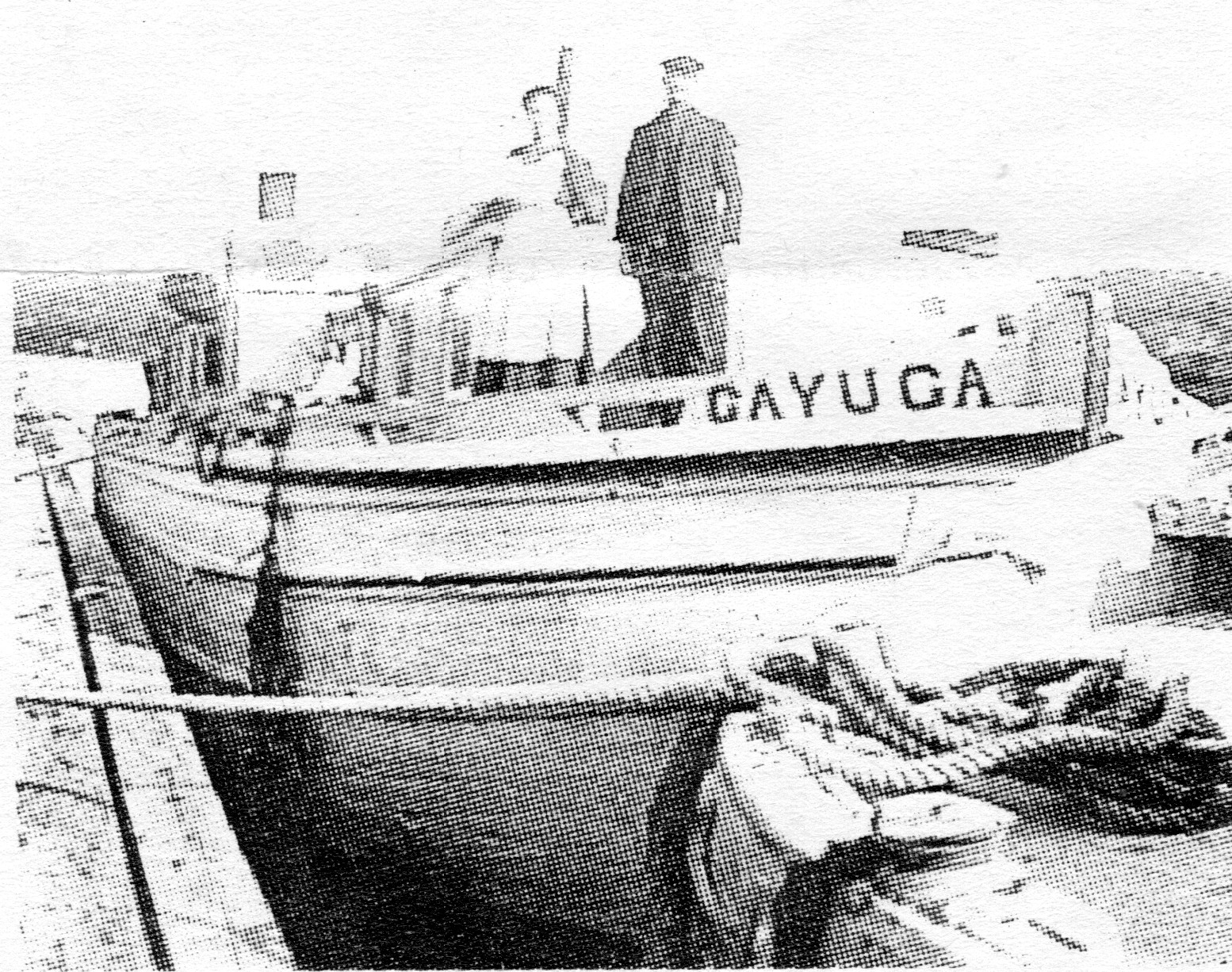
The area where the cottages are now was known as the “picnic grounds”. Frances showed us a picture of the point that was taken from their home by Floyd Miller around 1911. For sometime, the Ithaca YMCA had a tent camp there. Veda remembers how the boys - having come from the city and knowing nothing about cows - would ask, “How do you get milk?”.
The only cabin there was Jack Frowle's, around the point. And there was a house as you cross the creek, where the O’Brien Family lived. Later Franklin Sovocool had one of the first cottages there. At one time there was a large barn across the road from the Butt’s place.
Frances remembers the Frontanec on the Lake. She remembers when the large dock, which was across the tracks from their house, was being built. She sat on the porch when they were driving in the spikes. She thinks she may have ridden on the Frontanec once, and she remembers knowing the names of the boats on the lake and recognizing each when they went by — the Iroquois and the Mohawk and a smaller boat the Cayuga. She was very small and she remembers how it frightened her to go across the plank to get on the boat. Frances thought the boats might be considered noisy today, but she didn’t give it any thought while reading, playing, and sleeping near the lake and the railroad.
The railroad began taking over even before the Frontanec accident. Many shoppers took the train to Ithaca except on weekends. On weekends a certain group would get on at noon and would get back off at Lake Ridge at night, and sometimes they didn’t walk off - they were carried off! Veda remembers that the Baptist minister made quite a few trips to Ithaca and back on the train. She also remembers being at Frances’ house as the train brought in crates of melons, watermelons, and bananas in quantity. Mr. Brown always had a crate ordered for the family and they could have all they could eat.
Frances remembers that west from the Station, there was a stone wall and they would come and store the grain for the boats to pick up. Walter Sweazey once recalled to Frances that he remembered coming down the hill with a load of grain. He was a very small boy but remembered finding an old bag and filling it with grain so he could put it on the wagon.
Grandma Fenner lived to be 93 and her sisters lived to be 96 and 101. Orange peels? Veda finds it strange how we are able to remember certain things from childhood. As we spoke of Grandma Fenner (Elizabeth Foote Fenner) who often sat with the children for their school picture, Veda recalled how she would dry her orange peels on the window sill and later chew them. Cap Fenner later told Dee that Grandma Fenner lived to be 93 and her sisters lived to be 96 and 101. Orange peels?
Frances told us how she really enjoyed the Cayuga Lake book done by Louise Bemcnt’s class, especially the article by Doug Boles about Don Powers. Don will be 79 soon and was Emily’s son. He is Frances’ closest relative. Later when I talked to Don he told me how much Frances has influenced his life, and others. He explained, “Mother died early and Frances was like a mother to me. She is my only living close relative and has supported us a great deal. She has always been a helpful person and took great interest in kids, giving them extra time when they needed it. She is a religious person and spiritually has influenced my life.”
If you’d like to read more history on Hedden’s (Lake Ridge Point) you can find it in Cayuga Lake - Past, Present, And Future by Carol U. Sisler, 1989. Carol’s book includes an early view of Hedden’s Point undeveloped and an article on Don Powers which includes a picture with his mother, Emily Brown Powers.
Louise and I had wanted to meet Frances Brown for sometime. If we had known what a great experience it was going to be, we would have done it much sooner. Frances is a very interesting and special person. Her wonderful verses reflect life in Lansing and her experiences as a teacher. She wrote the following for Ellen Mahaney at her retirement.
